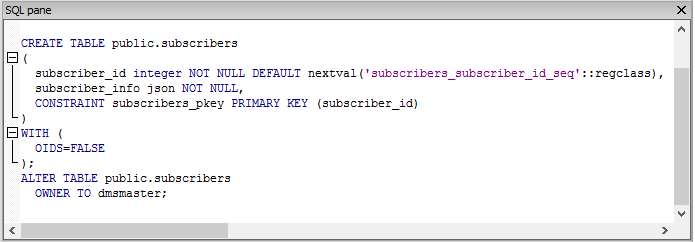AWS Database Blog
Migrate PostgreSQL Databases and Perform Ongoing Replication with the AWS Database Migration Service
Jeff Levine is a solutions architect for Amazon Web Services.
As a solutions architect for Amazon Web Services, I help our customers to migrate workloads to the AWS Cloud, a key part of which includes their databases. The AWS Database Migration Service (AWS DMS) enables organizations to migrate data to and from a variety of databases located in Amazon Relational Database Service (Amazon RDS), those running on Amazon EC2, and also those running on-premises. The service supports homogeneous migrations such as Oracle to Oracle, and also heterogeneous migrations such as Oracle to Amazon Aurora. You can also customize table mappings and perform translations. In this post, I am going to talk about two things, first about using an RDS PostgreSQL source database for DMS and then about using the recently announced continuous data replication feature, which can keep the target database up to date after the initial migration.
Using an RDS PostgreSQL Source
You might think that migration means just moving data from one location to another, but the process involves far more. The process must also keep up with transactions that take place during the migration, so that the database is left in a consistent state upon completion. Accordingly, when we look at migrating from an Amazon RDS PostgreSQL source database, we need to take into account both how data is moved and also environmental factors that can affect the ongoing processing of transactions while the migration is happening.
Let’s take the case of a PostgreSQL to MySQL migration. I’ll begin with a simple table definition.
CREATE TABLE subscribers (
subscriber_id SERIAL NOT NULL PRIMARY KEY, subscriber_info json NOT NULL
);I’m going to use pgAdmin, a popular open source administration tool for PostgreSQL, to create the table and display the specification in the source database.

After I run the DMS migration task, here’s how the newly created subscribers table appears in the target database using the program DbVisualizer.

Notice how the serial column is now an integer and the subscriber_info column has been converted to longtext. To understand what happened, we need to consider how DMS operates. DMS functions as an intermediate broker to a variety of different database engines. To make this conversion happen, DMS first maps the source data type (JSON in this case) to an intermediate DMS type and then maps that type to the target data type (longtext). It’s very important to take into account these mappings when designing your migration strategy. Note that I used the default mapping. DMS also allows you to customize the mappings if you want.
We also need to look at source-related performance factors such as replication activity and the use of write-ahead logging (WAL) that can affect the migration. Using Amazon RDS, you can change database parameters using parameter groups. One adjustment we suggest is changing the wal_sender_timeout parameter to 0. To do this, create a parameter group for your RDS PostgreSQL database and adjust the parameter accordingly. Because this is a dynamic parameter, the adjustment will take effect immediately. You can read about all the nuances of using PostgreSQL DMS sources in the RDS documentation.
Using Continuous Data Replication
Additionally, AWS recently announced continuous data replication for DMS, which enables you to keep your database up to date after the initial migration. With this feature, you can now have high availability during the replication process by specifying Multi-AZ when you create your replication instances.

When Multi-AZ is selected, two replication hosts will be created, each of which has its own IP address. Remember to adjust the underlying source and target security groups (or their on-premises equivalents) to grant both instances the appropriate level of access.
The AWS Database Migration Service offers a powerful set of migration capabilities. It is important to consider how the service works behind the scenes as part of the development of an overall migration plan. With continuous data replication, you can now keep your databases up to date after the initial load. It’s easy to get started. Follow our Getting Started Guide to migrate your database using AWS Database Migration Service with just a few clicks.